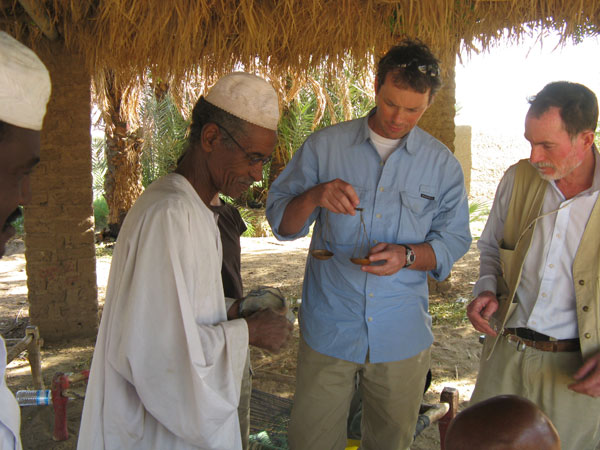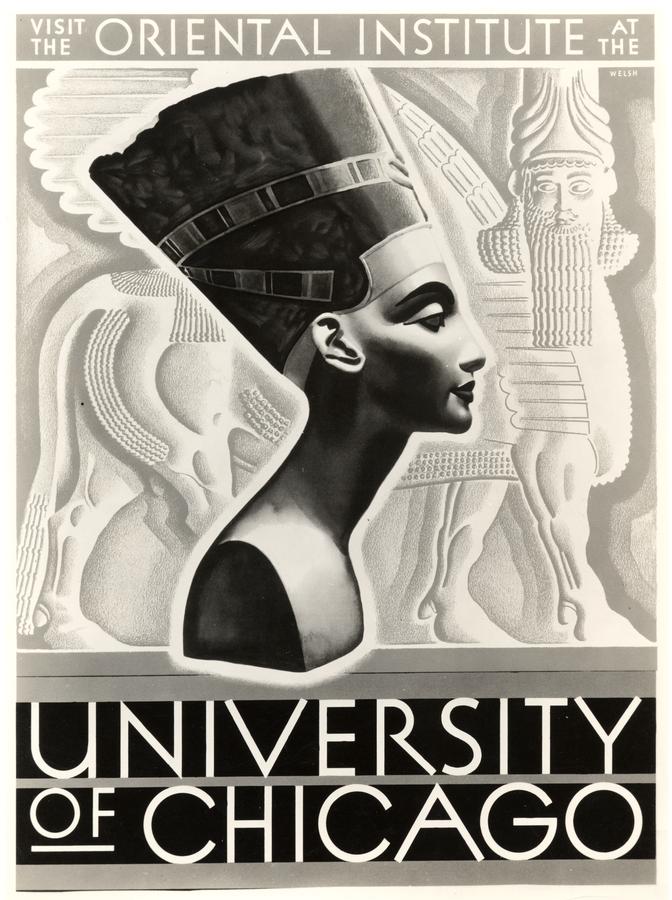Any halfway worthwhile institution, and the OI is far more than just that, is built not only by its immortals (a Frankfort, an Adams, a Reiner, a Wilson, a Braidwood [well, three Braidwoods plus an in-law, actually], to name a few beyond the incomparable Breasted) but also by legions of people, working both inside and outside its walls, whose bricks are perhaps fewer in number or duller in sheen, but which nevertheless ably carry their share of the load.
John Callaway, a journalist who
died suddenly on June 23, 2009 at the age of 72, was just such a bricklayer for the Institute, which of course knows a thing or two about bricks. The obit and this
interview from ten years ago give something of an overview of his impressive career--it's not half-bad to be called the best interviewer in the country by William F. Buckley, even in a fairly left-handed fashion.
One of John's many successes, though, is unlikely to be given full justice in any obituary or even at the doubtlessly boisterous memorial service which I will be sorry to miss, and that was his founding and directing the Benton Fellows program, which between 1983 and 1994 brought over 120 broadcast journalists from the United States and ten other countries to the University of Chicago for a year of classes, lectures, and special programs. A can't-miss element of their experience was inevitably a visit to the Oriental Institute, highlighted by an encounter with the indomitable Erica Reiner, who I once saw forcibly eject a
New York Times reporter from her office for asking the wrong questions.
Erica, however, had all the time in the world for John, and he for her: he wrote to me a while back that "she was one of my human and intellectual heroes. She always took such good care to see that we had superb Seminar sessions with her and her fine colleagues." Through the vagaries of my life, I have come across about a dozen of the Benton Fellows, most of whom remain active (and, indeed, increasingly influential) in broadcast or web journalism. About half of them spontaneously mentioned the OI/Erica experience when I brought up the U of C, and the other half, when I said that I had worked at the OI, raved about how welcoming Erica and her colleagues were, and how fascinating their work was.
About sixteen months ago, I wrote to John to ask whether he would contribute to this blog, and his reply was characteristic: he was too busy "with hundreds and hundreds of pages" of reading to produce or even promise anything for the blog, but his next book was to include a section on the OI and he'd send me something when he was drafting chapters. Sadly, he didn't and, maddeningly, I didn't nag. I just hope that he was able to get a few words about the OI down on paper, and that we can excerpt that book when it appears. John, who was unencumbered by a degree from the U of C or indeed from the U of anwyhere, was an awfully sensitive and thoughtful guy, and it would be good for all of us to know how a place like the Institute touched him.
John was one of the people who I had either the good sense or good luck to invite to contribute an inscription for the ages, when the OI's
roof was being rebuilt. As it happens, I remember his submission, which focused on his wife and daughters. Then, in a different ink, he wrote: "Can you add Erica Reiner's name to the blessing? I think I should hedge my bets." Well, John, consider that bet laid, and rest in peace.







 OIP 136.
OIP 136.






















 Stumble It!
Stumble It!

